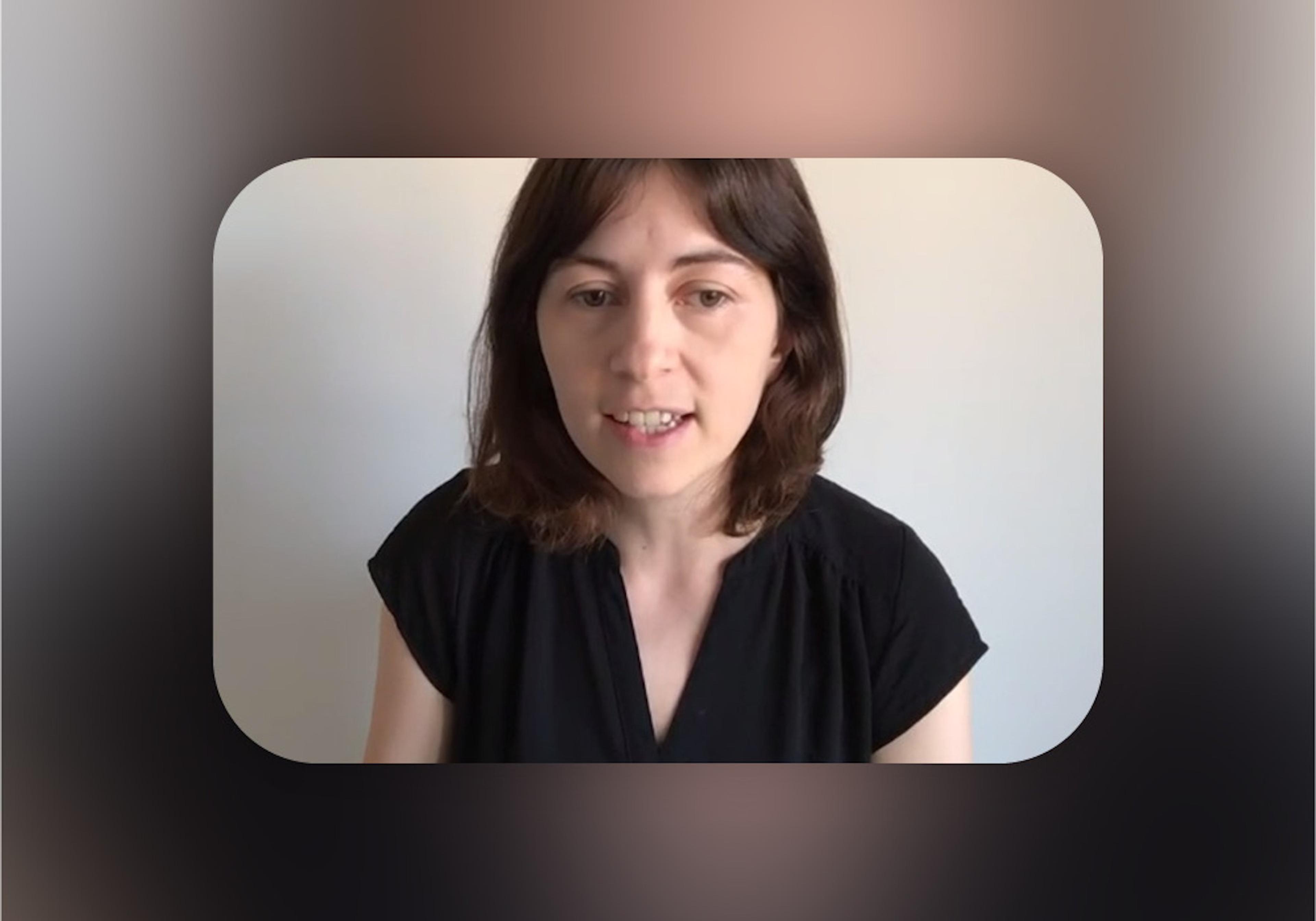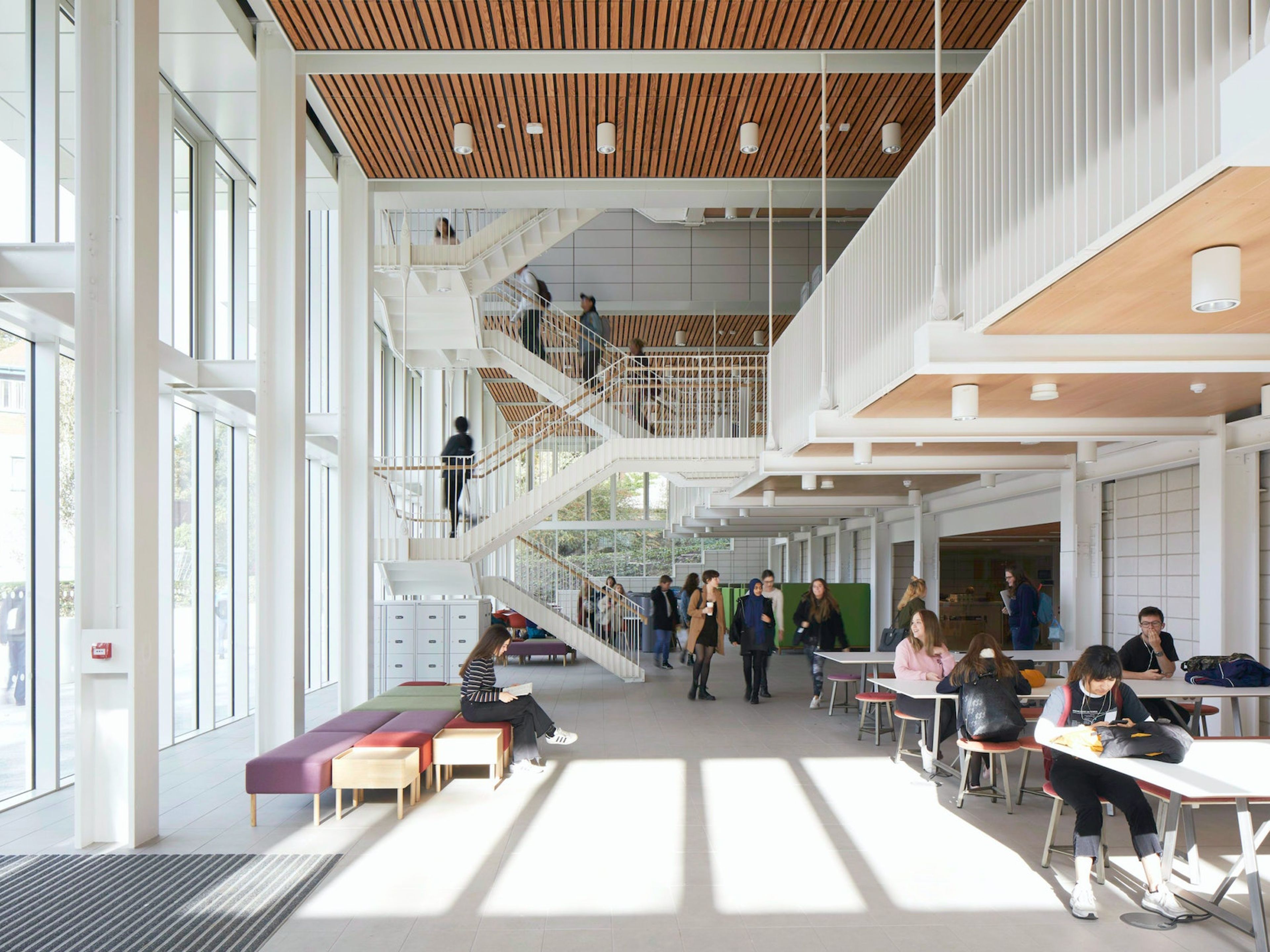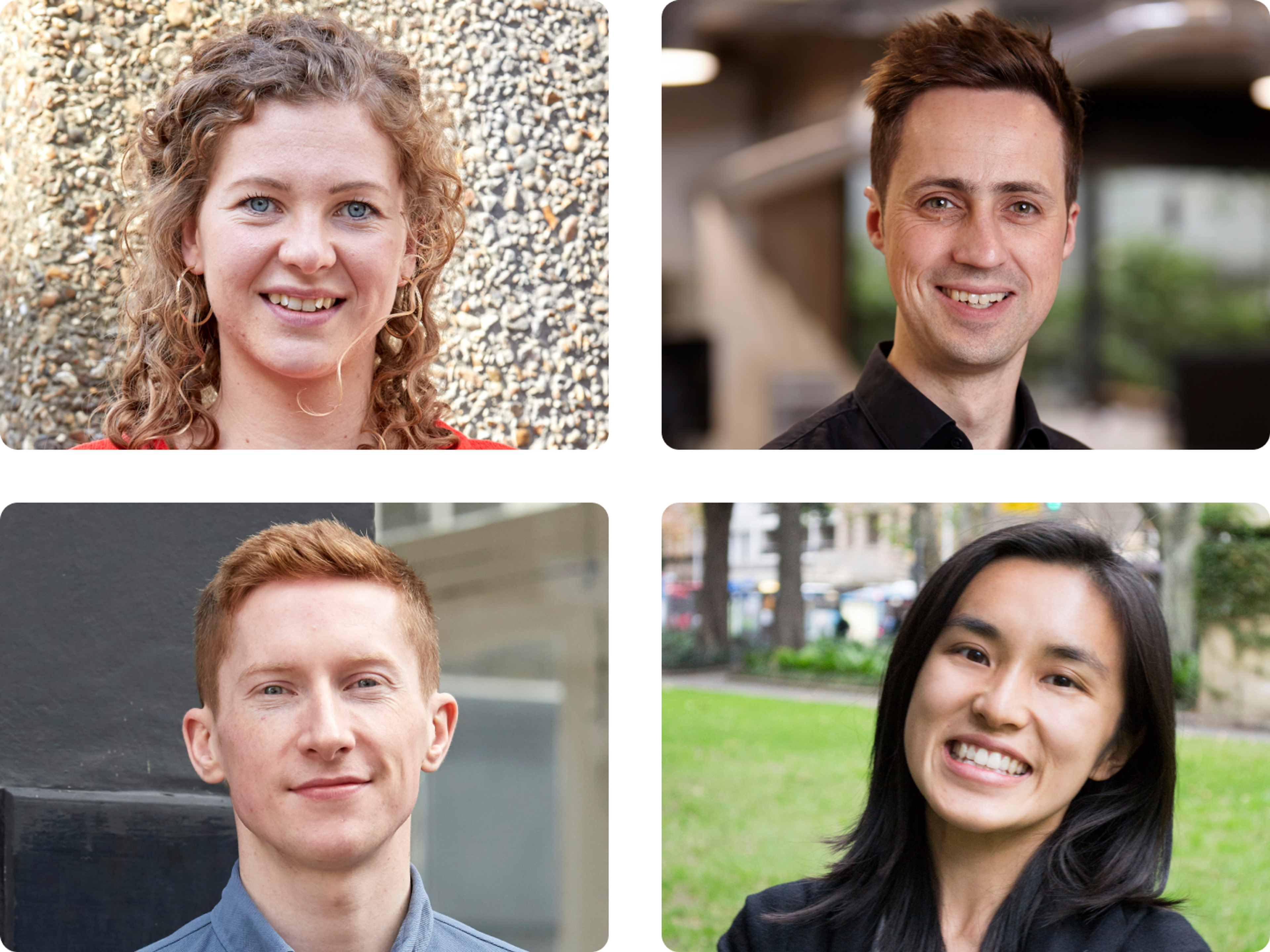Make higher education roundtable
by Sean Affleck, Joanna Griffiths, Simon Lincoln, Pete Matcham, David Patterson, James Redman, Jack Sallabank and Sarah WorthWas the future of higher education design always headed in this direction, or has COVID-19 charted a new course? Jack Sallabank chaired a roundtable with architects from Make to discuss their perspective on higher education design.
Jack Sallabank: What impact do you think COVID-19 will have on the future design of universities?
James Redman: There will be financial implications of COVID which universities will need to respond to. Student numbers are going to be uncertain for a while, and there are likely to be fewer international students. As a result, universities will be looking at their existing campuses and thinking about how they can make them more efficient spatially, with a focus on creating more flexible spaces.
Joanna Griffiths: The pandemic has demonstrated that remote learning is viable for universities and they can deliver lectures in a very efficient way. Therefore, I think there will be more remote learning embedded into university courses, which will open up the possibility for universities to rethink how they use their current stock of buildings.
Pete Matcham: We now need to ask if we really need this much space and how much of what happens here can be done remotely. The Kennedy Building that we designed for University of Oxford is essentially a laboratory building but with a lot of write-up space. If you were doing that building now, knowing what we know about our ability to work remotely in large numbers, you would just build the labs in the buildings and the write-up areas could be in another location. This would reduce the footprint by roughly 40%.
Sean Affleck: This could be a really exciting moment for universities. Their buildings could be developed and operated in such a way that they could expand or contract, depending on the numbers. Different types of spaces could enable different types of learning, with students becoming less reliant on the campus and instead just using one or two really high-quality, flexible buildings.
Joanna: The Teaching and Learning Building that we designed for University of Nottingham is an interesting example of exactly this. It’s a hub building, and there is no one faculty assigned to it. Students can come onto campus for one day a week and spend most of their day in the building. There are quiet areas, areas where big groups can collaborate, areas where you can get your lunch. It has a great connection to nature and is naturally ventilated, so it is a space you can spend all day in.
James: Despite the focus on efficiency and flexibility, the flagship buildings you see on university campuses will still be required to attract talent. Key days in the university year are the open days, when prospective students are visiting, and universities need a really high-quality journey to take them on. If those buildings are an exemplar showcasing what the university is about, then that will be the thing which sells it to prospective students.
Jack: How do you respond to a brief which asks for a flexible building?
David Patterson: The Teaching and Learning Building brief was exactly that – the university didn’t know what they would be teaching in it, so they wanted it to be flexible, adaptable and to provide a real step change in how they were delivering education. We won the brief because we designed column-free floorplates that allowed users to adapt the space to meet teaching needs now and in the future.
Sean: Flexible buildings need to be as big-span as possible, with as high floor-to-ceiling as you can possibly get, and you build columns not walls. If you have these fundamentals in place, you have the agility to change and adapt the buildings as you need.
Simon Lincoln: If you are looking for ultimate flexibility, then you start thinking about modular construction and the role that has to play in universities. You can bolt on another section of the building as and when your numbers dictate.

“I think there will be more remote learning embedded into university courses, which will open up the possibility for universities to rethink how they use their current stock of buildings.”
Joanna Griffiths
Partner, Make Architects
Jack: Pre-COVID, climate change and the environment were the big items on the agenda for universities. What can we expect to see in the coming years on that front?
Joanna: I think we are at the beginning of that journey. There are more clients waking up to the reality of climate change, and more architects and construction professionals are developing skills to help them meet those challenges. I think we will see more clients embedding the ambition to achieve zero-carbon buildings at the very outset of a project.
Pete: When designing a new campus, you have the chance to incorporate low-energy buildings into your masterplan, but a lot of us are working on projects which involve old buildings with poor thermal efficiency. We therefore need to make sure that we are doing what we can to improve the thermal efficiency of those older buildings. I think that requirement will accelerate over the coming years.
David: The role of the natural environment will become increasingly important, not only to deal with the effects of climate change, such as flooding and higher temperatures, but to connect students and communities with nature, which has many demonstrable benefits to their health and wellbeing. There will also be a shift in focus to encourage wildlife and biodiversity on campuses.
Simon: Nearly every brief we are getting in Australia now talks about native species. We have been seeing some enticing briefs that want to use universities and university buildings as ‘living labs’ – buildings where students can learn but which also support the wildlife and ecology on the campus.
James: The ultimate users or clients of the buildings we are planning at the moment are currently 14 or 15 years old, so we need to ensure we consider this next generation of students. What themes, discussions and passions are they currently talking about? Campuses will need to be visibly sustainable – places that will give prospective students, having visited for only a few hours, a real sense that the university is investing in the things which matter to them.
Jack: How can a city-based university be ‘of the city’ and not just ‘in the city’?
David: It’s about making the university boundary as porous as possible and creating people-focused public spaces. That can be achieved in part by responding to pedestrian desire lines and how people physically need to move around that part of the city. In London we’ve seen LSE do some great work over the last 15 years to create student-focused public realm. But universities also need to open their spaces for the outside world to use. Certain university buildings only function three or four days a week. Could these spaces be used by the community on the other days?
Sean: With space at a premium in cities, it would be great to have the opportunity to better use university space during down times.
Joanna: I agree with David that the key to universities integrating into the city is not just about the architecture but also by making a connection with the community through various initiatives.
James: Creating connections with local industry is also key for universities. What we’ve noticed during our conversations with University of York is not just their focus on the three-year undergraduate degree but also the next steps for the students. With this in mind, they are offering incubator space for students to stay on the campus and develop their own companies, often in collaboration with local industry.

“The pandemic has accelerated a lot of trends that were already happening. Digital education will become increasingly important. People will be demanding more social spaces to come together and learn.”
David Patterson
Partner, Make Architects
Jack: What does the university of the future look like?
Simon: It will have fewer iconic buildings, but the ones they do have will be more important. We will see more living labs and a better relationship between buildings and nature.
Joanna: It’s an exciting time, and we will see universities that have been established for hundreds of years having to pivot and change to adapt. It will be exciting but challenging for estates departments as they try and get their head around how quickly they need to move. As a student, it will be a fantastic time to go to university, as there will be lots more crossover between different courses – better communication and collaboration with people you might not previously have encountered.
Sean: One day buildings will be one thing and the next day something else. Very blurry, very green, very natural and lots of robots.
James: They will showcase the emerging trends and passions of the future generations. The students are the clients, and they will be asking about what they’re tuition fees are being spent on. There will be more students and staff based at home, connecting through technology but learning better as students learn where they want and when they want. There will be a greater focus on health, wellbeing and mindfulness, with less rigid teaching methods. It’ll be more about gaining holistic knowledge.
David: It will be a better version of what we have today. The pandemic has accelerated a lot of trends that were already happening, such as digital education, which will become an increasingly important way to teach and learn. Students, academics and communities will demand more social spaces to come together, learn and socialise, while universities will explore how their campuses can be better utilised to create efficient estates, becoming more sustainable and reducing running costs. Our challenge will be working out how we can make existing campuses work harder to achieve this.
Pete: I think we will build on the positives that have come out of the pandemic, such as the need for cleaner and quieter environments. We will also see fewer but better buildings being developed. Our role as designers is to make sure we keep challenging the brief so that we are helping universities shape their future.
Authors
Sean Affleck is a Director at Make and leads the practice's Hong Kong studio. He's currently overseeing the design and delivery of a major mixed-use masterplanning scheme in Shanghai, China.
Joanna Griffiths is a partner at Make and worked on the University of Nottingham’s Teaching and Learning Building, and is now looking at how the building canbe extended further.
LinkSimon Lincoln is the Asia-Pacific Make Director and oversees design and new business for the Sydney studio, which has included masterplanning for the University of Sydney and the University of Nottingham in the UK.
LinkPete Matcham is a partner at Make who worked on the Big Data Institute and Innovation Building for the University of Oxford, on the Old Road Campus. He also acted as project architect for the London Academy in Edgware when he worked at Foster +Partners.
LinkDavid Patterson leads Make's education workstream and has significant masterplanning experience. He has held a range of teaching and mentoring positions, and is chair of RIBA London.
James Redman is head of Make's urban design working group. He's currently leading several strategic masterplanning projects, including the masterplan for Swindon's Kimmerfields regeneration scheme.
Jack Sallabank is the founder of Future Places Studio, a place-based research and strategy studio that specialises in exploring the macro and micro trends impacting the built environment.
Sarah Worth is the Head of Communications at Make. She oversees corporate communications for all graphics, media and events, and leads Make’s Exchange thought leadership series.
LinkPublication
This article appeared in Exchange Issue No. 3, a look at how the COVID-19 pandemic has influenced the future of university design, featuring insight from chancellors, architects, students and more.
Read more

